
Commodore 64
Posted by musovern on Apr 20th, 2019 in Commodore | 0 comments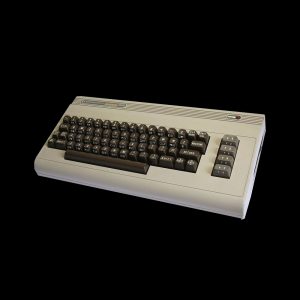
The Commodore 64 is an 8-bit home computer introduced by Commodore International in January 1982. Volume production started in the spring of 1982, with machines being released on to the market in August at a price of US $595.Preceded by the Commodore VIC-20 and Commodore MAX Machine, the C64 features 64KB (65,536 bytes) of memory with sound and graphics performance that were superior to IBM-compatible computers of that time. It is commonly known as the C64 or C=64 (after the graphic logo on the case) and occasionally as the CBM 64 (for Commodore Business Machines), or VIC-64. It has also been affectionately nicknamed the “breadbox” and “bullnose” due to the shape and color of the first version of its casing.
Read More...Amstrad PCW8256
Posted by musovern on Jan 30th, 2019 in Amstrad, Vintage Computers | 0 comments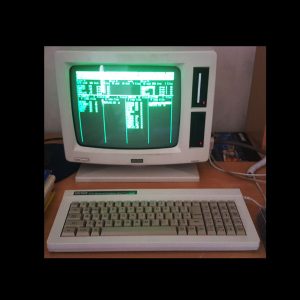
The PCW 8256 was launched in September 1985, and had 256 KB of RAM and one floppy disk drive. Launched a few months later, the PCW 8512 had 512 KB of RAM and two floppy disk drives. Both systems consisted of three units: a printer; a keyboard; and a monochrome CRT monitor whose casing included the processor, memory, motherboard, one or two floppy disk drives, the power supply for all the units and the connectors for the printer and keyboard. The monitor displayed green characters on a black background. It measured 12 inches (30 cm) diagonally, and showed 32 lines of 90 characters each. The designers preferred this to the usual personal computer display of 25 80-character lines, as the larger size would be more convenient for displaying a whole letter. The monitor could also display graphics well enough for the bundled graphics program and for some games.
Read More...Talking Electronics TEC-1D
Posted by musovern on Jan 30th, 2019 in Single Board Computers, Talking Electronics TEC-1D | 0 comments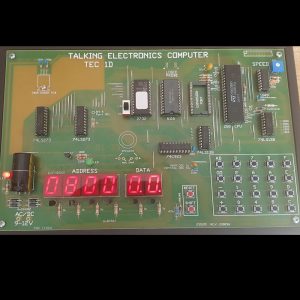
The TEC-1 is a single-board kit computer first produced by the Australian hobbyist electronics magazine Talking Electronics in the early 1980s.[1] The design by John Hardy and Ken Stone was based on the Zilog Z80 CPU, had 2K of RAM and 2K of ROM in a default configuration. Later versions used a 4k ROM with two different versions of the monitor software selectable via a switch. This allowed the early software presented in the magazine to be used with the later version of the TEC-1.
Read More...VeriFone Tranz 330
Posted by musovern on Jan 30th, 2019 in Single Board Computers, VeriFone Tranz 330 | 0 comments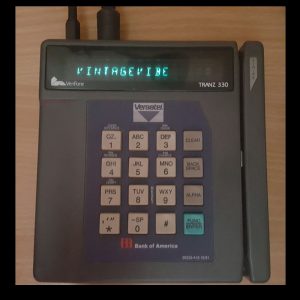
The VeriFone Tranz 330 was a very popular, possibly iconic credit card terminal that was produced almost unchanged from 1985 through the mid ’00s. Inside is a Zilog Z80 running at 3.57MHz (colorburst!), 32K RAM and 32K EPROM, Z80 DART (SIO), Z80 PIO, Z80 CTC, modem, RTC, and the keypad/display. It’s a cookie cutter Z80 SBC design, which makes development pretty easy. They are plentiful and cheap on the used market due to the lack of PCI security (tamper proofing, end to end encryption, etc).
Read More...MiniMax 8085
Posted by musovern on Jan 29th, 2019 in MinMax 8085 | 1 comment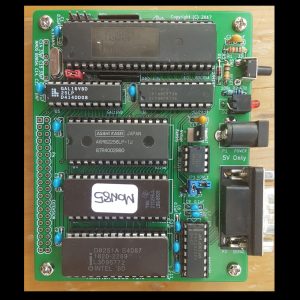
The MiniMax8085 project has been brewing for almost three years. Sometime in the spring of 2014 my kids and I visited local the surplus store, where my kids found some Intel 8000 series parts in the kids-fill-your-bucket area. Among these ICs were there: an 8085 CPU, an 8155 RAM with I/O ports and timer, a couple of 8255 PPIs, an 8282 latch, and some 27C128 UV EPROMs. It looked like a good start for an 8085 based computer that can be used to teach my kids some computer design and programming basics.
I wanted the project to be simple to build, with a minimal number of components, but yet to be a fully functional single board computer (e.g. to include the memory and an input/output device, for example a UART) with an extension bus. I checked the Internet for existing homebrew 8085 computers and found Roman Fülek’s NCB85 and NCB85v2 projects, and Glitch Works 8085 projects. While I liked these projects, they didn’t quite meet my project design goals: